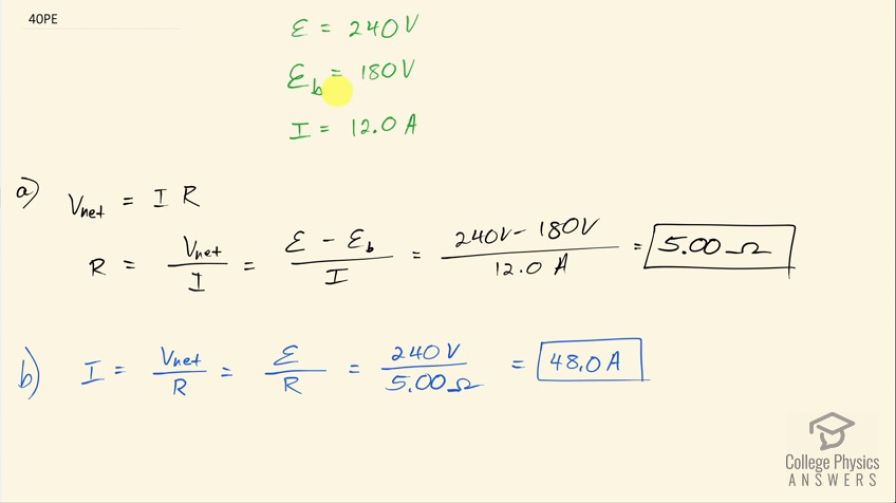Question
A motor operating on 240 V electricity has a 180 V back emf at operating speed and draws a 12.0 A current. (a) What is its resistance? (b) What current does it draw when it is first started?
Final Answer
Solution video
OpenStax College Physics, Chapter 23, Problem 40 (Problems & Exercises)

vote with a rating of
votes with an average rating of
.
Calculator Screenshots
Video Transcript
This is College Physics Answers with Shaun Dychko. A motor is connected to a 240 volt emf source and it's generating a back emf of 180 volts as a result of its rotation and while it's rotating, it's drawing a current of 12.0 amps and so the question in part (a) is what is the resistance of the coil inside this motor? So Ohm's law says that the net voltage is current times resistance; normally, you don't see the word 'net' there but we need the word net here to to talk about the two different voltages at play here. We have this 240 volt applied by the source and then 180 volts opposing that and so rearranging this to solve for R, we divide both sides by the current and so R is the net voltage divided by current and that's the source emf minus the back emf over current 240 volts minus 180 volts divided by 12.0 is 5.00 ohms resistance. And part (b) is asking what current does it draw when it's first started? So when it's first started, the net voltage is just the emf of the source— there is no back emf since it's not rotating yet, it just has begun being turned on— and so we have 240 volts divided by 5.00 ohms resistance and that's 48.0 amps when it's initially turned on.
